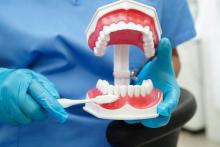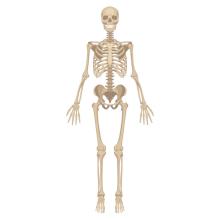Recent Publications

Wisam Sbeit, Anas Kadah, Amir Mari, Tawfik Khoury: A state-of-the-art comprehensive review summarizing the emerging data on endoscopic ultrasound-guided liver diseases management (Eur J Gastroenterol Hepatol . )
Liver diseases are among the most common diseases worldwide accounting for substantial morbidity and mortality. Most liver diseases necessitate radiological evaluation or accurate diagnosis and recently for management as well. In the last decade, the application of therapeutic endoscopic ultrasound (EUS) procedure has been increasingly utilized for the management of various liver diseases. In this comprehensive narrative review article, we provide systematic overview on EUS-guided therapeutic interventions in various liver diseases summarizing most updated data regarding technical success, outcomes and safety profiles.

Ekaterina Shlush: Potential antigenic cross-reactivity between SARS-CoV-2 and Dengue viruses (Clin Infect Dis .)
COVID-19 and dengue fever are difficult to distinguish given shared clinical and laboratory features. Failing to consider COVID-19 due to false-positive dengue serology can have serious implications. We aimed to assess this possible cross reactivity.

Mizied Falah: Lauryl Gallate Activity and Streptococcus mutans: Its Effects on Biofilm Formation, Acidogenicity and Gene Expression (Molecules .)
Streptococcus mutans bacterium is implicated in the pathogenesis of dental caries due to the production of biofilm and organic acids from dietary sucrose. Despite the availability of various means of prophylaxis, caries still has a high worldwide prevalence. Therefore, it is important to find new pharmaceuticals to inhibit S. mutans biofilm formation and acidogenicity. The aim of the current study was to evaluate the activity of lauryl gallate (dodecyl gallate) against S. mutans acidogenicity, the expression of biofilm-associated genes, and biofilm development on solid surfaces (polystyrene, glass)

Amiel A Dror, Netanel Eisenbach, Matti Mizrachi, Asaf Zigron, Samer Srouji, Eyal Sela: Vaccine hesitancy: the next challenge in the fight against COVID-19 (Eur J Epidemiol .)
Vaccine hesitancy remains a barrier to full population inoculation against highly infectious diseases. Coincident with the rapid developments of COVID-19 vaccines globally, concerns about the safety of such a vaccine could contribute to vaccine hesitancy. We analyzed 1941 anonymous questionnaires completed by healthcare workers and members of the general Israeli population, regarding acceptance of a potential COVID-19 vaccine. Our results indicate that healthcare staff involved in the care of COVID-19 positive patients, and individuals considering themselves at risk of disease, were more likely to self-report acquiescence to COVID-19 vaccination if and when available. In contrast, parents, nurses, and medical workers not caring for SARS-CoV-2 positive patients expressed higher levels of vaccine hesitancy. Interventional educational campaigns targeted towards populations at risk of vaccine hesitancy are therefore urgently needed to combat misinformation and avoid low inoculation rates.

Mycoplasma and Ureaplasma carriage in pregnant women: the prevalence of transmission from mother to newborn (BMC Pregnancy Childbirth .)
Mycoplasma and Ureaplasma have been extensively studied for their possible impact on pregnancy, and their involvement in newborn diseases. This work examined Mycoplasma and Ureaplasma carriage among gravidas women and newborns in Israel, as well as associations between carriage and demographic characteristics, risk factors, pregnancy outcomes, and newborn morbidity rates. (Avi Peretz, Oran Tameri, Maya Azrad, Shay Barak, Yuri Perlitz, Wadie Abu Dahoud, Moshe Ben-Ami, Amir Kushnir)

David Karasik: The Musculoskeletal Knowledge Portal: Making Omics Data Useful to the Broader Scientific Community J Bone Miner Res . )
The development of high-throughput genotyping technologies and large biobank collections, complemented with rapid methodological advances in statistical genetics, has enabled hypothesis-free genome-wide association studies (GWAS), which have identified hundreds of genetic variants across many loci associated with musculoskeletal conditions. Similarly, basic scientists have valuable molecular cellular and animal data based on musculoskeletal disease that would be enhanced by being able to determine the human translation of their findings. By further synthesizing these large scale human genomic musculoskeletal datasets with complementary evidence from model organisms, new and existing genetic loci can be statistically fine-mapped to plausibly causal variants, candidate genes and biological pathways. Genes and pathways identified using this approach can be further prioritized as drug targets including side-effect profiling and the potential for new indications. To bring together these big data, and to realize the vision of creating a knowledge portal, the International Federation of Musculoskeletal Research Societies (IFMRS) established a working group to collaborate with scientists from the Broad Institute to create the Musculoskeletal Knowledge Portal (MSK-KP) that would consolidate -omics datasets from humans, cellular experiments, and model organisms into a central repository that can be accessed by researchers. The vision of the MSK-KP is to enable better understanding of the biological mechanisms underlying musculoskeletal disease and apply this knowledge to identify and develop new disease interventions.
Muhammad Mansour: The Role of Hospital and Community Pharmacists in the Management of COVID-19: Towards an Expanded Definition of the Roles, Responsibilities, and Duties of the Pharmacist (Pharmacy (Basel) . )
The COVID-19 outbreak has unearthed new opportunities for pharmacists: community and hospital pharmacists have, indeed, played a key role during the COVID-19 pandemic, suggesting that a fully integrated, inter-sectoral and inter-professional collaboration is necessary to face crises and public health emergencies. Preliminary, emerging evidence seems to suggest that, probably, a new era in the history of pharmacies ("the post-COVID-19 post-pharmaceutical care era") has begun, with community pharmacists acquiring more professional standing, being authentic heroes and frontline health workers.

Yumna Busool Abu Eta, Shireen Hamed Azzam, Raneen Shehadeh Mashour: Predicting factors of ocular hypertension following keratoplasty: Indications versus the procedure (Eur J Ophthalmol .)
Assesses the incidence of ocular hypertension (OHTN) following penetrating keratoplasty (PKP) versus deep anterior lamellar keratoplasty (DALK) corneal transplant surgeries, and to assess the impact of indication for transplantation versus surgery type on OHTN development.

Conjunctivodacryocystorhinostomy (CDCR) success rates and complications in endoscopic vs non-endoscopic approaches: a systematic review (Int Forum Allergy Rhinol .)
Epiphora due to refractory bicanalicular obstructions is typically managed by conjunctivodacryocystorhinostomy (CDCR) with or without the assistance of nasal endoscopy. However, the evidence for its benefit is unclear. A systematic review of the literature on the treatment of epiphora by CDCR was performed (March 1, 2018). All studies reporting original data on patients suffering from epiphora treated with CDCR surgery were included. Primary outcomes were success and satisfaction rates. Secondary outcomes were CDCR complications. A comparison was made between the results obtained in patients undergoing CDCR with vs without assistance of nasal endoscopy. (Netanel Eisenbach, Ohad Karni, Eyal Sela, Amiel Dror, Einat Levy, Yanir Kassif, Relli Ovadya, Ohad Ronen, Tal Marshak)

Ohad Ronen: Case for staged thyroidectomy (Head Neck .)
Recent modifications in the management of well-differentiated thyroid cancer have resulted in significant alterations in clinical approach. Utilizing a series of preoperative and postoperative risk factors involving both the patient and the disease pathology, we offer the term "staged thyroidectomy" to help organize these risk factors for patients and the endocrine team to optimize management. This approach is intended to incorporate our latest nuanced understanding of certain endocrine pathology and may serve to optimize patient outcomes.

Karl Skorecki: Kidney failure risk in type 1 vs. type 2 childhood-onset diabetes mellitus (Pediatr Nephrol .)
Diabetic kidney disease (DKD) is becoming increasingly common among children. We aimed to estimate the risk of end-stage renal disease (ESKD) and mortality among adolescents with type 1 diabetes mellitus (T1DM) or type 2 diabetes mellitus (T2DM) and normal renal function compared with non-diabetics. We hypothesized that childhood onset T1DM vs. T2DM would be associated with a different risk profile for developing ESKD and its complications.

The association between carotid calcium on dental panoramic radiographs and coronary calcium score on chest computerized tomography (Dentomaxillofac Radiol . )
Coronary artery calcium measured by CT predicts future coronary events. Similarly, carotid artery calcium on dental panoramic radiographs has been associated with increased cardiovascular events. Pre-procedural assessment of candidates for valve replacement in our institution includes panoramic radiographs and chest tomography. We aimed to assess the association of carotid calcium on panoramic radiographs with coronary artery calcium on chest tomography. (Shemy Carasso, Dalit Porat Ben Amy, Mariana Issawy, Fabio Kusniec, Diab Ghanim, Doron Sudarsky, Gabby Elbaz-Greener, Wadi Kinany, Chen Shmuel , Imad Abu El-Naaj, Erez Kachel, Offer Amir

Tomer Meirson: Ocular Adverse Events Induced by Immune Checkpoint Inhibitors: A Comprehensive Pharmacovigilance Analysis (Ocul Immunol Inflamm)
Characterizes ocular adverse events (oAEs) caused by immune checkpoint inhibitors (ICIs).

Tawfik Khoury, Anas Kadah, Amir Mari, Mahmud Mahamid, Wisam Sbeit : A validated score predicting common bile duct stone in patients hospitalized with acute calculus cholecystitis: a multi-center retrospective study (Surg Endosc . )
Concomitant common bile duct (CBD) stone in the setting of acute calculous cholecystitis (ACC) should be suspected once abnormal liver indices are noticed. We aimed to identify predictors of CBD stone in patients hospitalized with ACC.





